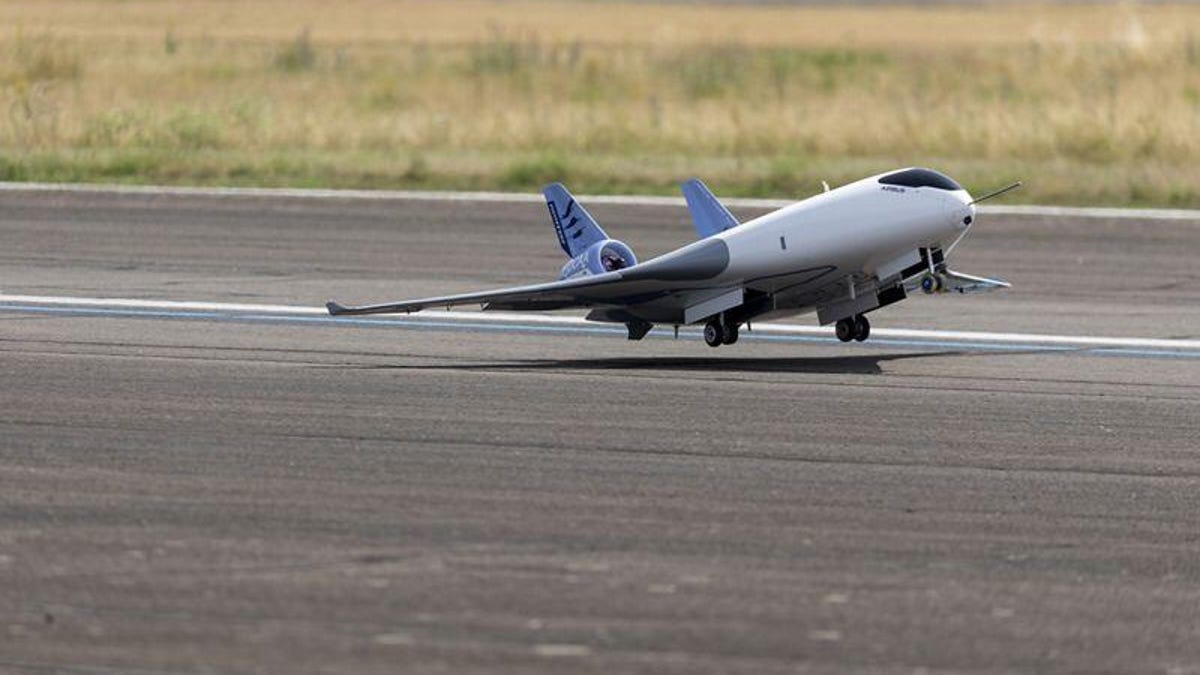Airbus wants to change the shape of commercial flights
But the MAVERIC's blended-wing design would be many years off, if it ever carries passengers at all.

Your eyes aren't deceiving you, the MAVERIC really is that small.
Since the start of commercial flight, the basic shape of an airplane hasn't changed radically. Take a long tube, stick on a pair of wings, add a tail assembly and you pretty much have an airplane. Yes, aeronautical design is a bit more complicated than that, and a Boeing 747 barely resembles a Douglas DC-3, but anyone would instantly recognize either one as an airplane.
But one day there's a chance, albeit a small one, you may soar through the sky in a much different shape. At the Singapore Airshow on Tuesday, Airbus publicly revealed a blended-wing aircraft design it says could end up in passenger service.
A view from above shows the MAVERIC's unique shape.
Called MAVERIC (a much shorter way of saying Model Aircraft for Validation and Experimentation of Robust Innovative Controls), the aircraft is a pilotless demonstrator that's just 2 meters long and 3.2 meters wide. Though the aircraft has been in testing since June, Airbus has largely kept it under wraps until now.
Though similar to flying-wing aircraft like the Stealth Bomber, blended-wing aircraft have a shape where the fuselage and wing blend together without a clear dividing line between the two. In contrast, a flying-wing aircraft has no discernible fuselage at all.
The potential advantages of a blended-wing aircraft include a stronger structure, a lighter aircraft weight and quieter engines. Also, less drag from the blended shape would mean better fuel efficiency.
For passengers, Airbus says a cabin more like a large room than a tube would bring an "exceptionally comfortable cabin layout, enabling passengers to benefit from additional legroom and larger aisles for more personal comfort." Yeah, we heard grand promises like that when the 747 and Airbus A380 debuted, but airlines just crammed in more seats instead. Airbus also would have to convince passengers to sit in an airplane without conventional windows.
The MAVERIC's wide cabin could resemble more of a theater than a conventional airliner.
In any case, it'll be a long time if you ever fly in a life-sized MAVERIC, if you do so at all. Flight testing of the demonstrator will continue through this year and Airbus hasn't said when it could build a MAVERIC that would be flown by human crews.
Boeing has built blended-wing aircraft, as well. Developed in partnership with NASA, the X-48 was a pilotless aircraft that flew test missions between August 2012 and April 2013. Since then, the two have continued to develop blended-wing technology. And last year, Dutch airline KLM said it's partnering with Delft University of Technology to develop a "Flying-V" blended-wing plane.

